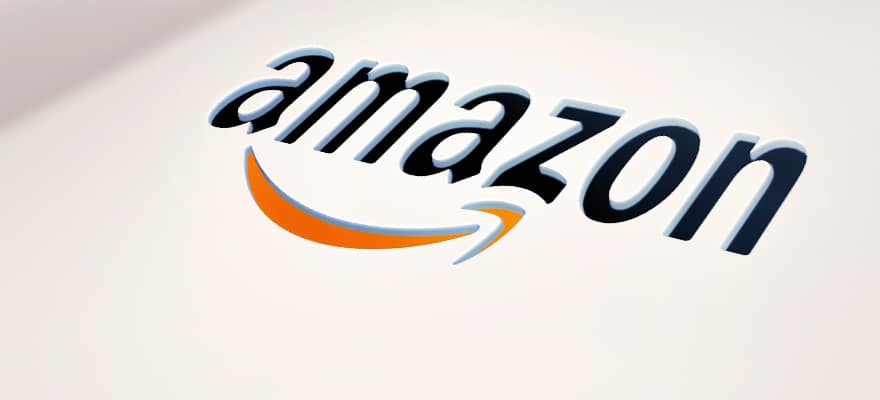Many small businesses feel that they are in a seller’s market when it comes to finding a payment processor. Rates are given and not negotiated, and you should be happy this processor is going to let you work with them. This cannot be any farther from the truth. You have a lot of power in your negotiations with processors and I am going to explain what you need to watch for and how to get the best rate for you and your business.
What you cannot change, but can master
The first aspect of payment negotiations is interchange. This is a cost that Visa and MasterCard charge payment providers, and is the same for all parties in that geographical region. The regions are broken down into areas like USA, Canada, Europe, etc. Prices for interchange may vary from region to region, but you need to remember that all interchange rates are the same for all providers in that region. This helps you in your negotiations because they cannot tell you that they have a better interchange rate than another provider. You already know that isn’t true.
Interchange costs can vary because of fluctuations in how they are calculated, which changes from region to region. However, it is important to know that some processors will not deviate from their set structure because there are other factors which can come into play for a region, like regulations, and knowing this will help you from coming across as difficult or pushing too hard in a negotiation. Some of these aspects as to how it is calculated, which you can have some wiggle room with include: What type of card is being processed? If it is a rewards card, it will be more expensive than a standard card without any rewards. Also, the costs of processing are affected by whether the card is issued domestically or is an international card. Also, rates can be balanced across regions if you are dealing directly and not through a third party provider. This role of having your business weighed by region or internationally is another advantage you have at negotiating or controlling rates. You may find a processor who can give you a great rate for the US but has killer fees for international transactions. If that is the case, there is no problem with you seeking a local processor in another region. This will allow you to expand your market reach, but also controlling your costs for what would normally be processed as an international transaction. For example, say that you have a US company, your main volume comes from US and the EU and processor A, located in the US, after inspecting your processing history and application, provides you with a split of Domestic (USA traffic): 2.25% and Rest of the World (RoW): 3.75%.
In this case, you would be quite inspired to try and find processor B in EU, could provide you with 2.25% for domestic traffic as well, only this time, domestic traffic means the EU and 3.75% for your RoW traffic (US).
If you can achieve that, routing your US traffic to the US processor and your EU traffic to the EU processor will ensure you pay a domestic rate for all (or most) of your traffic. Not only that, but as you can expect, the approval ratio will definitely increase since EU transactions usually have much higher approval rates when processed by an EU acquirer and the same goes with the US traffic being processed by US acquirers. Needless to say, there are also some very good and attractive reasons to open the required offshore company in the EU, and that will be treated in another insight.
If you can understand these aspects you can have an advantage when you are negotiating prices. We all want to believe that our sales agent is going to be straightforward with pricing. However, always do your homework. Sometimes the agent might make a mistake, and you can catch that and save yourself time and money. Remember that there is always a margin that has to be met for those processors, which in the case of e-commerce transactions ranges from about 1.65% to 2.13%. Also remember the earlier point, Visa and MasterCard charge the same to all providers per region, and that like any business, these providers are in business and not charity. Losing money to gain your business isn’t likely. Therefore if you are quoted a price like “1.55% and no hidden fees”, question it right away. Ask if this is the rate for all cards or if premium cards have a different rate. Also, ask the rate for foreign transactions. These questions will help you understand what the real cost is. The golden rule is “If it sounds too good to be true, it is”. However, if you do feel rates may be a bit high, you can always ask for scaled rates. If a threshold is met, they can agree to a tiered rate, which can be based not only on transaction levels for a specific period, but even an annual or historical basis. This will not only allow you to ease into a relationship with a new payment processor, but also be rewarded for doing more business.
What you can change: Pricing Models
Thinking about this, there are other fees that can be changed by the processor other than interchange. This is where you have to document each offer very well. You know now what cannot be changed, and when an offer is too good, but you can still play a provider off another. Have a good understanding of your revenue stream, and how much your business will increase with the new payment methods you are willing to accept. The more you process, the better for the provider, so use the boost in business to your advantage.
Processors usually offer two pricing models: tiered and interchange pass through. Tiered pricing is popular on processors side because it is based on the average rate across the industry and gives the provider a better advantage in regards to profit margins. Interchange pass through rates are calculated by adding a percentage to the fees charged by the credit card companies and the acquiring banks themselves. This last one will allow you to see exactly how much the processor is making, and giving you the best idea of who is marking up the most and who is giving you the best rate for your business. However, as mentioned above, some processor will not be willing to change the way they charge their merchants for you, simply because this isn’t their business model. In this case, accept it but rather try to obtain your rate to be split by region and scaled so that you pay less with volume. The convincing point to get that is to explain that you do have the volume, but you also do need a good reason to switch it to them.
Do not insist on having interchange + type of ratesif your processors is not able or even willing to change to this model. It would be too bad to lose a good account for that, especially since this interchange + model is not always proven to be much more profitable to you and can be rather difficult to manage. Usually it makes it difficult to do the reconciliation for your finance department as more than often it will be interchange + fee per card type per region, endless possibilities … You never know exactly how much you pay and if you do the average rate of the overall cost, you could be amazed. Sometimes, as we saw, a simple Domestic/RoW type of rate is the best, added to a decent transaction fee and you know what to expect. Also never agree to a sharp switch, instead smoothen the switch over 6 months in order to prevent chargebacks and therefore avoid “burning” your previous account, which, if the new one hold its promises, can always be used as a backup account should anything go wrong or help improve your approval ratio as we will see in a dedicated insight.
In any case, we will also publish articles with a description of the fees, standards costs per industry for each fee and of course how to negotiate each one specifically.
What you can change: Terms and Strategy
Don’t get tied into anything that is longer than you can project for your business. If you can only think about employees, suppliers, and other aspects of the business for less than a year, why lock yourself into a contract for long-term with a payment provider? Always check the terms for early termination fees as well, as many can cost you a good chunk of your revenue if you are not careful.
It is a bit out of the scope of this article, but an important thing to remember to reduce costs if you also have brick and mortar operations in addition to your e-commerce focus is not to tie yourself into an equipment lease. This will tie you into a service just as much as an early termination fee, and in the end will cost you much more than buying equipment from a third-party and will let you take your equipment with you, should you want to change providers. Leasing equipment can range from $12-25 USD per month, and over a 5 year contract for leasing the equipment will on the cheaper range cost you more than $700, in comparison to buying it outright in the beginning for $400 on average.
It’s a buyer’s market, if you know what you are doing
Doing your homework will always help you more in the long run with payment provider negotiations. Know your own business and how much business you are going to do in the future as much as the providers business. Even if you are in a high risk industry, not all merchants are the same. Know about the competition and what they process in comparison to you. If the other players have high chargeback rates and you have a good history, you can play this to your advantage when negotiating rates for a third party account. It will allow the processor to give you a better price, whereas they will offer a much higher one to risky players who aren’t as safe an investment as you are.
A good chargeback ratio merchant in a high risk industry is of high interest to a third party account because it drops the overall account exposure, if it is your case, use it.
Also, when targeting a Direct Merchant Account
Merchant Account
Merchant accounts are component of the payments ecosystem that are essential for the brokerage business. These allow the company to accept multiple types of payments but namely credit and debit cards. In contrast to a traditional bank account, the regulations for merchant accounts are less stringent. A merchant account is established between the company accepting the payment and a merchant acquiring bank. Per merchant agreement directly with an acquiring bank or via an aggregator, ay agreement c
Merchant accounts are component of the payments ecosystem that are essential for the brokerage business. These allow the company to accept multiple types of payments but namely credit and debit cards. In contrast to a traditional bank account, the regulations for merchant accounts are less stringent. A merchant account is established between the company accepting the payment and a merchant acquiring bank. Per merchant agreement directly with an acquiring bank or via an aggregator, ay agreement c
Read this Term (DMA), you should know that this parameter still is of an importance to the processor. First it will ease on the Compliance and Risk departments as they can be almost certain the Acquiring bank will not decline the application, but also because the Payment processing companies are being “noted” by their Acquiring partners. The acquiring banks have the ultimate liability toward the Credit Card companies when it comes to Compliance and chargeback ratios. And just like aggregation accounts will carefully manage the overall account ratio, the acquiring banks carefully watch their overall processors riskiness because ultimately, they will have to respond to Visa and MasterCard about it. So at the end of the day, nothing is more welcome than a High Risk merchant which is in fact Low Risk, and you can definitely Leverage
Leverage
In financial trading, leverage is a loan supplied by a broker, which facilitates a trader in being able to control a relatively large amount of money with a significantly lesser initial investment. Leverage therefore allows traders to make a much greater return on investment compared to trading without any leverage. Traders seek to make a profit from movements in financial markets, such as stocks and currencies.Trading without any leverage would greatly diminish the potential rewards, so traders
In financial trading, leverage is a loan supplied by a broker, which facilitates a trader in being able to control a relatively large amount of money with a significantly lesser initial investment. Leverage therefore allows traders to make a much greater return on investment compared to trading without any leverage. Traders seek to make a profit from movements in financial markets, such as stocks and currencies.Trading without any leverage would greatly diminish the potential rewards, so traders
Read this Term this. We will also cover the differences and advantages of each type of account (Direct and third party) in a future insight.
The provider is trying to make money too, and if you know the processing systems, the rates, and what margin they are making, you will hold the advantage in that meeting
Take your time, do your research, and always remember that you can walk away from the table. They need your business more than you need theirs, and if you are willing to walk away if you feel uncomfortable, or that the rates are not what you think is reasonable or fair, do it. Just like with any business, you have the power of the wallet. Use it, but don’t shop around too much. Just like merchants, payment providers network, they have agents, ISO, resellers, and knowing that a merchant is shopping around will lead to questioning of why you are checking rates so much, and can lead to compliance and underwriting processes taking longer and possibly leading to declined applications, especially if this suspicion reaches the Acquiring bank internal Compliance which will happen eventually since there are a limited number of them after all, and this number even shrinks drastically as much as your industry is considered High Risk. As with everything, moderation is the key and reason should be applied to changes in providers.
Many small businesses feel that they are in a seller’s market when it comes to finding a payment processor. Rates are given and not negotiated, and you should be happy this processor is going to let you work with them. This cannot be any farther from the truth. You have a lot of power in your negotiations with processors and I am going to explain what you need to watch for and how to get the best rate for you and your business.
What you cannot change, but can master
The first aspect of payment negotiations is interchange. This is a cost that Visa and MasterCard charge payment providers, and is the same for all parties in that geographical region. The regions are broken down into areas like USA, Canada, Europe, etc. Prices for interchange may vary from region to region, but you need to remember that all interchange rates are the same for all providers in that region. This helps you in your negotiations because they cannot tell you that they have a better interchange rate than another provider. You already know that isn’t true.
Interchange costs can vary because of fluctuations in how they are calculated, which changes from region to region. However, it is important to know that some processors will not deviate from their set structure because there are other factors which can come into play for a region, like regulations, and knowing this will help you from coming across as difficult or pushing too hard in a negotiation. Some of these aspects as to how it is calculated, which you can have some wiggle room with include: What type of card is being processed? If it is a rewards card, it will be more expensive than a standard card without any rewards. Also, the costs of processing are affected by whether the card is issued domestically or is an international card. Also, rates can be balanced across regions if you are dealing directly and not through a third party provider. This role of having your business weighed by region or internationally is another advantage you have at negotiating or controlling rates. You may find a processor who can give you a great rate for the US but has killer fees for international transactions. If that is the case, there is no problem with you seeking a local processor in another region. This will allow you to expand your market reach, but also controlling your costs for what would normally be processed as an international transaction. For example, say that you have a US company, your main volume comes from US and the EU and processor A, located in the US, after inspecting your processing history and application, provides you with a split of Domestic (USA traffic): 2.25% and Rest of the World (RoW): 3.75%.
In this case, you would be quite inspired to try and find processor B in EU, could provide you with 2.25% for domestic traffic as well, only this time, domestic traffic means the EU and 3.75% for your RoW traffic (US).
If you can achieve that, routing your US traffic to the US processor and your EU traffic to the EU processor will ensure you pay a domestic rate for all (or most) of your traffic. Not only that, but as you can expect, the approval ratio will definitely increase since EU transactions usually have much higher approval rates when processed by an EU acquirer and the same goes with the US traffic being processed by US acquirers. Needless to say, there are also some very good and attractive reasons to open the required offshore company in the EU, and that will be treated in another insight.
If you can understand these aspects you can have an advantage when you are negotiating prices. We all want to believe that our sales agent is going to be straightforward with pricing. However, always do your homework. Sometimes the agent might make a mistake, and you can catch that and save yourself time and money. Remember that there is always a margin that has to be met for those processors, which in the case of e-commerce transactions ranges from about 1.65% to 2.13%. Also remember the earlier point, Visa and MasterCard charge the same to all providers per region, and that like any business, these providers are in business and not charity. Losing money to gain your business isn’t likely. Therefore if you are quoted a price like “1.55% and no hidden fees”, question it right away. Ask if this is the rate for all cards or if premium cards have a different rate. Also, ask the rate for foreign transactions. These questions will help you understand what the real cost is. The golden rule is “If it sounds too good to be true, it is”. However, if you do feel rates may be a bit high, you can always ask for scaled rates. If a threshold is met, they can agree to a tiered rate, which can be based not only on transaction levels for a specific period, but even an annual or historical basis. This will not only allow you to ease into a relationship with a new payment processor, but also be rewarded for doing more business.
What you can change: Pricing Models
Thinking about this, there are other fees that can be changed by the processor other than interchange. This is where you have to document each offer very well. You know now what cannot be changed, and when an offer is too good, but you can still play a provider off another. Have a good understanding of your revenue stream, and how much your business will increase with the new payment methods you are willing to accept. The more you process, the better for the provider, so use the boost in business to your advantage.
Processors usually offer two pricing models: tiered and interchange pass through. Tiered pricing is popular on processors side because it is based on the average rate across the industry and gives the provider a better advantage in regards to profit margins. Interchange pass through rates are calculated by adding a percentage to the fees charged by the credit card companies and the acquiring banks themselves. This last one will allow you to see exactly how much the processor is making, and giving you the best idea of who is marking up the most and who is giving you the best rate for your business. However, as mentioned above, some processor will not be willing to change the way they charge their merchants for you, simply because this isn’t their business model. In this case, accept it but rather try to obtain your rate to be split by region and scaled so that you pay less with volume. The convincing point to get that is to explain that you do have the volume, but you also do need a good reason to switch it to them.
Do not insist on having interchange + type of ratesif your processors is not able or even willing to change to this model. It would be too bad to lose a good account for that, especially since this interchange + model is not always proven to be much more profitable to you and can be rather difficult to manage. Usually it makes it difficult to do the reconciliation for your finance department as more than often it will be interchange + fee per card type per region, endless possibilities … You never know exactly how much you pay and if you do the average rate of the overall cost, you could be amazed. Sometimes, as we saw, a simple Domestic/RoW type of rate is the best, added to a decent transaction fee and you know what to expect. Also never agree to a sharp switch, instead smoothen the switch over 6 months in order to prevent chargebacks and therefore avoid “burning” your previous account, which, if the new one hold its promises, can always be used as a backup account should anything go wrong or help improve your approval ratio as we will see in a dedicated insight.
In any case, we will also publish articles with a description of the fees, standards costs per industry for each fee and of course how to negotiate each one specifically.
What you can change: Terms and Strategy
Don’t get tied into anything that is longer than you can project for your business. If you can only think about employees, suppliers, and other aspects of the business for less than a year, why lock yourself into a contract for long-term with a payment provider? Always check the terms for early termination fees as well, as many can cost you a good chunk of your revenue if you are not careful.
It is a bit out of the scope of this article, but an important thing to remember to reduce costs if you also have brick and mortar operations in addition to your e-commerce focus is not to tie yourself into an equipment lease. This will tie you into a service just as much as an early termination fee, and in the end will cost you much more than buying equipment from a third-party and will let you take your equipment with you, should you want to change providers. Leasing equipment can range from $12-25 USD per month, and over a 5 year contract for leasing the equipment will on the cheaper range cost you more than $700, in comparison to buying it outright in the beginning for $400 on average.
It’s a buyer’s market, if you know what you are doing
Doing your homework will always help you more in the long run with payment provider negotiations. Know your own business and how much business you are going to do in the future as much as the providers business. Even if you are in a high risk industry, not all merchants are the same. Know about the competition and what they process in comparison to you. If the other players have high chargeback rates and you have a good history, you can play this to your advantage when negotiating rates for a third party account. It will allow the processor to give you a better price, whereas they will offer a much higher one to risky players who aren’t as safe an investment as you are.
A good chargeback ratio merchant in a high risk industry is of high interest to a third party account because it drops the overall account exposure, if it is your case, use it.
Also, when targeting a Direct Merchant Account
Merchant Account
Merchant accounts are component of the payments ecosystem that are essential for the brokerage business. These allow the company to accept multiple types of payments but namely credit and debit cards. In contrast to a traditional bank account, the regulations for merchant accounts are less stringent. A merchant account is established between the company accepting the payment and a merchant acquiring bank. Per merchant agreement directly with an acquiring bank or via an aggregator, ay agreement c
Merchant accounts are component of the payments ecosystem that are essential for the brokerage business. These allow the company to accept multiple types of payments but namely credit and debit cards. In contrast to a traditional bank account, the regulations for merchant accounts are less stringent. A merchant account is established between the company accepting the payment and a merchant acquiring bank. Per merchant agreement directly with an acquiring bank or via an aggregator, ay agreement c
Read this Term (DMA), you should know that this parameter still is of an importance to the processor. First it will ease on the Compliance and Risk departments as they can be almost certain the Acquiring bank will not decline the application, but also because the Payment processing companies are being “noted” by their Acquiring partners. The acquiring banks have the ultimate liability toward the Credit Card companies when it comes to Compliance and chargeback ratios. And just like aggregation accounts will carefully manage the overall account ratio, the acquiring banks carefully watch their overall processors riskiness because ultimately, they will have to respond to Visa and MasterCard about it. So at the end of the day, nothing is more welcome than a High Risk merchant which is in fact Low Risk, and you can definitely Leverage
Leverage
In financial trading, leverage is a loan supplied by a broker, which facilitates a trader in being able to control a relatively large amount of money with a significantly lesser initial investment. Leverage therefore allows traders to make a much greater return on investment compared to trading without any leverage. Traders seek to make a profit from movements in financial markets, such as stocks and currencies.Trading without any leverage would greatly diminish the potential rewards, so traders
In financial trading, leverage is a loan supplied by a broker, which facilitates a trader in being able to control a relatively large amount of money with a significantly lesser initial investment. Leverage therefore allows traders to make a much greater return on investment compared to trading without any leverage. Traders seek to make a profit from movements in financial markets, such as stocks and currencies.Trading without any leverage would greatly diminish the potential rewards, so traders
Read this Term this. We will also cover the differences and advantages of each type of account (Direct and third party) in a future insight.
The provider is trying to make money too, and if you know the processing systems, the rates, and what margin they are making, you will hold the advantage in that meeting
Take your time, do your research, and always remember that you can walk away from the table. They need your business more than you need theirs, and if you are willing to walk away if you feel uncomfortable, or that the rates are not what you think is reasonable or fair, do it. Just like with any business, you have the power of the wallet. Use it, but don’t shop around too much. Just like merchants, payment providers network, they have agents, ISO, resellers, and knowing that a merchant is shopping around will lead to questioning of why you are checking rates so much, and can lead to compliance and underwriting processes taking longer and possibly leading to declined applications, especially if this suspicion reaches the Acquiring bank internal Compliance which will happen eventually since there are a limited number of them after all, and this number even shrinks drastically as much as your industry is considered High Risk. As with everything, moderation is the key and reason should be applied to changes in providers.






















